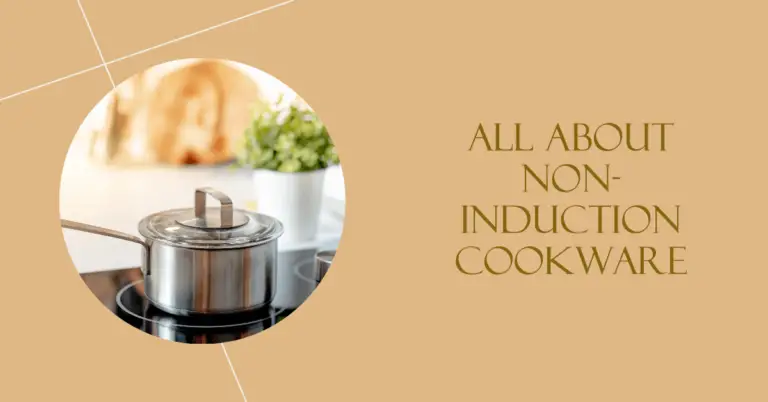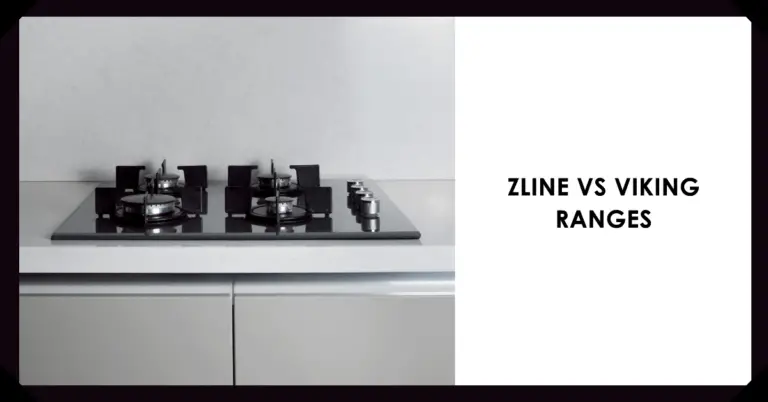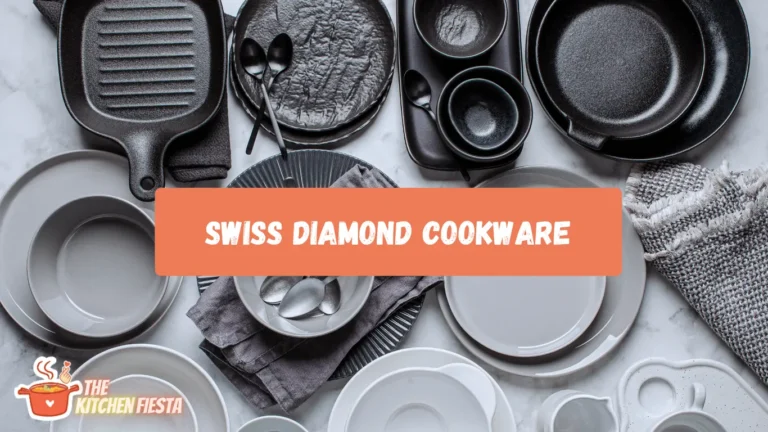Is Corningware Lead Free? (The Surprising Truth)
Corningware holds a special place in many home cooks’ hearts. The white porcelain glass dishes with their signature cornflower blue flowers bring back nostalgic memories of potlucks and family dinners.
But is this vintage kitchenware safe to use today? Does Corningware contain lead?
The short answer is: it depends. Corningware produced prior to the late 1980s may contain higher levels of lead. However, pieces made after 1989 are advertised as lead-free and follow FDA regulations.
In this post, we’ll dive into the history of Corningware, discuss how much lead is in older dishes, look at when they transitioned to lead-free, and provide tips for using your Corningware safely. Read on to learn the truth about lead in this classic bakeware!
A Brief History of Beloved Corningware
Corningware was first introduced in 1958, but the story begins a few years earlier in 1953 when S. Donald Stookey of Corning Glass Works invented Pyroceram, a white glass-ceramic material capable of withstanding extreme temperature changes without breaking.
Pyroceram formed the basis of Corningware, which was marketed as versatile cookware that could go from freezer to oven or tabletop. The glass-ceramic construction provided excellent thermal resistance compared to typical glass or ceramics of the time.
These new oven-to-table dishes became a beloved staple in American households. Corningware’s white finish with cornflower blue accents paired nicely with the avocado green and harvest gold color schemes dominating Mid-century modern style.
By the 1960s, nearly every family owned at least a few pieces of Corningware. Numerous product lines and shapes like French White and Cornflower Blue expanded the brand’s popularity over the decades.
Does Vintage Corningware Contain Lead?
Now that we’ve covered the history, let’s address the safety question around lead in Corningware head on.
The short answer is yes, Corningware dishes produced prior to 1989 may contain higher levels of lead in the glass material.
This lead was originally added to improve the durability of the glass-ceramic and increase its thermal resistance. However, we now know that lead can leach from dishes into food over time, especially acidic foods, so this formula changed.
How Much Lead is Actually in Old Corningware?
To give you a sense of the amount, lab testing shows pre-1989 Corningware dishes can have lead levels ranging from 82 parts per million (ppm) on the lower end to 336 ppm on the higher end.
For comparison, common lead crystal glassware often exceeds 1000 ppm of lead, since the lead oxide gives it that sparkling quality.
So vintage Corningware sits in the middle range – more than typical modern dishes but less than leaded crystal in terms of lead content. Just 5 ppm is considered the FDA limit for lead in newly manufactured dinnerware today.
The risk is that over years of repeated use, especially with acidic foods like tomatoes, small amounts of lead in older Corningware can leach out and into food. Tiny doses of lead can accumulate in the body over time.
At What Point Did Corningware Become Lead-Free?
By the late 1980s, Corning was ready to transition to a lead-free version of their iconic bakeware to align with evolving safety standards. Most Corningware dishes produced after 1989 are advertised as lead-free:
- August 1989 – Corning first introduced lead-free Corning Ware in their French White II line. Pieces are stamped “Corning Ware Made in USA” on the bottom.
- 1991 – Lead-free Corning Ware Original Stove Top Ovenware debuts.
- 1993 – The Cornflower line switched to lead-free construction.
- Mid 1990s – Almost all Corningware was lead-free. Newer pieces simply have the Cornflower stamp.
So if you find Corningware at a thrift store or inherited from a relative, check the production date or markings underneath. If it was made after the late 1980s, it should comply with modern safety standards around lead.
How to Tell if Your Corningware Dishes are Lead-Free?
Wondering if your Corningware is from the lead-free era? Here are a few tips for identifying newer, safer pieces:
- Check the Bottom Stamp – Look at the markings on the bottom. Corningware made after 1989 often has “Made in USA” stamped on it rather than just a glassmark cornflower design.
- “Lite” – Corningware Lite was introduced in the early 1990s as a new, lighter weight lead-free version. These feel noticeably lighter to hold compared to vintage pieces.
- No Blue Flowers – Some 1990s+ styles eliminated the blue flowers completely, indicating newer lead-free dishes.
- Stickers – Lead-free Corningware often had “Lead-free” stickers on the bottom, though these may have worn off.
- Weight – Heft the dish in your hand. Pre-1989 Corningware feels noticeably heavier and thicker than newer lighter-weight, thinner lead-free versions.
Checking these subtle clues can help you determine if your vintage dish is newer and lead-free or if it’s an older piece with higher lead levels. When in doubt, you can use home lead testing kits to confirm one way or another.
Is Old Corningware Safe to Use? Tips for Minimizing Any Risks?
Okay, so Corningware dishes made before the 1990s may contain lead. But does this mean you should throw out all your vintage pieces?
The consensus is that older Corningware is generally safe to use moderately, but not for all purposes. Since lead can accumulate over time with repeat exposure, you may want to limit heavily acidic foods prepared often in older dishes.
Here are some tips for safely using your vintage Corningware:
- Reserve older pieces for special occasion or decorative use rather than routine cooking. Use newer Corningware or alternatives for frequent meals.
- Handwash only to avoid deterioration – the dishwasher is harsh on older material. And no abrasives that could scratch!
- Avoid putting piping hot dishes straight from the oven onto counters or tables. The temperature shock can damage vintage material and potentially expose more lead. Use hot pads.
- Don’t use acidic ingredients like tomatoes or citrus juices repeatedly in old dishes. Opt for other materials when cooking these foods regularly.
- For storage, use older Corningware for dry goods like flour or sugar rather than wet leftovers.
Following these precautions minimizes potential lead exposure from vintage pieces. The safety risks of occasional use are quite low, especially if durable thick dishes. But phasing heavily used old dishes out for newer lead-free versions is wise.
Quality Lead-Free Corningware Alternatives
If you prefer using lead-free bakeware or want to replace well-loved old dishes, here are some excellent Corningware alternatives:
- Pyrex Glassware – After 1998, Pyrex switched to soda lime glass without lead instead of borosilicate. Great for baking and storage.
- Anchor Hocking Fire-King – These glass baking dishes don’t contain lead. Similar performance to Corningware.
- Emile Henry Ceramic Bakeware – Beautiful French ceramic casseroles, pie dishes, and ramekins ideal for cooking and serving. Naturally lead-free clay.
- Le Creuset Stoneware – Enameled stoneware cassoulettes and casseroles offer vibrant colors. Resistant to chipping and staining.
Any of these brands allow you to enjoy the functionality of Corningware without the concerns of lead. Look for American-made dishes after the 1990s for assured safety.
The Bottom Line on Lead in Corningware
Corningware holds a special nostalgia for many, but it’s understandable if learning about potential lead in vintage pieces is worrying. Here are the key takeaways:
- Pre-1989 Corningware may contain higher lead – Before the late 1980s, lead was added to the glass formula, so old dishes could have levels between 82 – 336 ppm.
- Use vintage pieces moderately – Occasional, decorative use of older dishes is likely fine, but avoid frequent cooking/storing of acidic foods to be cautious.
- Newer pieces are advertised lead-free – Corningware made after 1989 follows FDA lead limits of under 5 ppm. Look for “Made in USA” on bottom.
- Consider lead-free alternatives – For cooking and storage, opt for Pyrex, Anchor Hocking, Emile Henry, Le Creuset instead of heavily used vintage Corningware to eliminate any risks.
While lead in some vintage pieces may raise concerns, with care and common sense, classic Corningware can still have a place setting on your table for years to come.



